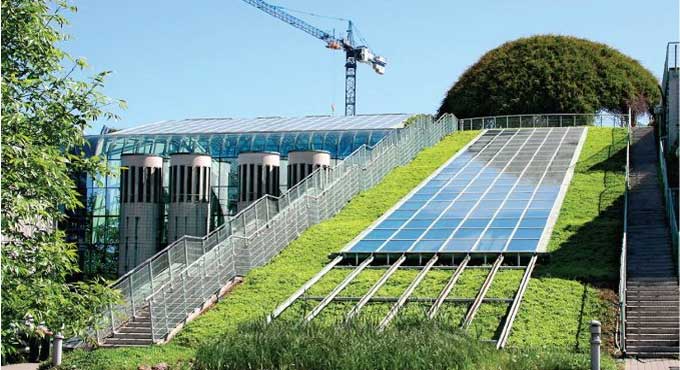
Sustainable and Energy-Efficient Smart Buildings for the future

Incorporating smart building technology into your business is becoming more popular as more businesses realize its benefits. Buildings that use smart technology to control various systems are called smart buildings.
Internet of Things, artificial intelligence, machine learning, and data analytics can be used in smart buildings to optimize performance and reduce energy consumption. Smart buildings can adapt to changing weather conditions to provide comfortable and efficient living environments.
Define Smart Buildings
Smart buildings optimize energy efficiency, reduce environmental impact, and improve operational efficiency while responding to the needs of their occupants.
As part of smart buildings, various technologies are used, including sensors, automation, and data analysis, to make the building more comfortable, safe, and efficient.
In smart buildings, various building functions are monitored and controlled, including heating, cooling, lighting, security, ventilation, etc. Building managers can monitor and manage building operations in real-time by connecting these systems to a cloud-based centralized control system.
Smart Buildings Key Features
Energy Monitoring System (EMS)
Smart buildings are also equipped with energy monitoring systems, or EMSs. Energy consumption is monitored throughout the building using sensors, which provide real-time data. By analyzing these data, building managers can identify areas of waste and make adjustments to improve efficiency. It is possible to use this data to help building owners optimize their energy production and reduce their dependence on the grid.
Fault Detection & Diagnosis (FDD)
Diagnostics of faults in a building's systems are possible through fault detection and diagnosis or FDD technologies.
The FDD analyzes equipment and systems for abnormalities by installing sensors throughout the building. Building managers or maintenance staff can automatically be notified when a fault is detected, allowing them to address the issue quickly.
There are many applications for FDD, such as HVAC systems, where faults can result in energy wasted and reduced performance. FDD allows energy consumption to be reduced and costly repairs can be avoided by detecting and fixing faults early.
Predictive Maintenance
Data analysis and machine learning are used in predictive maintenance to predict when equipment or systems are likely to fail. A predictive maintenance system can identify patterns in data from sensors and other sources that indicate a potential problem. By taking action before the issue arises, building managers can prevent it from happening.
In addition, to allow maintenance costs to reduce, predictive maintenance minimizes downtime caused by equipment failures. Predictive maintenance can also increase equipment and system longevity by addressing issues before they become critical.
Smart Buildings Benefits
Energy efficiency is one of the most significant benefits of having a smart building. It is possible to reduce energy consumption by up to 20% by using automated systems that control various building systems. In addition to saving money, this reduces carbon emissions, helping the environment.
Another major benefit is improving user comfort & convenience. By using smart systems, lighting & temperature can be automatically controlled on the basis of user preferences. As a result, the building can be optimized as per user comfort along with its energy efficiency.
To learn more, watch the following video tutorial.
Video Source: CNBC International TV
Additionally to the benefits mentioned above, smart buildings are attractive to building owners and occupants because of other key features. In addition to its main features and benefits, smart buildings have a number of other advantages.
Wrapping it Up
With more people realizing the benefits of smart buildings, smart buildings are becoming increasingly popular. A smart building can be made smarter with technologies such as fault detection, diagnosis, and energy monitoring. An investment in these technologies can reduce energy usage, increase occupant comfort, and improve building asset management.


